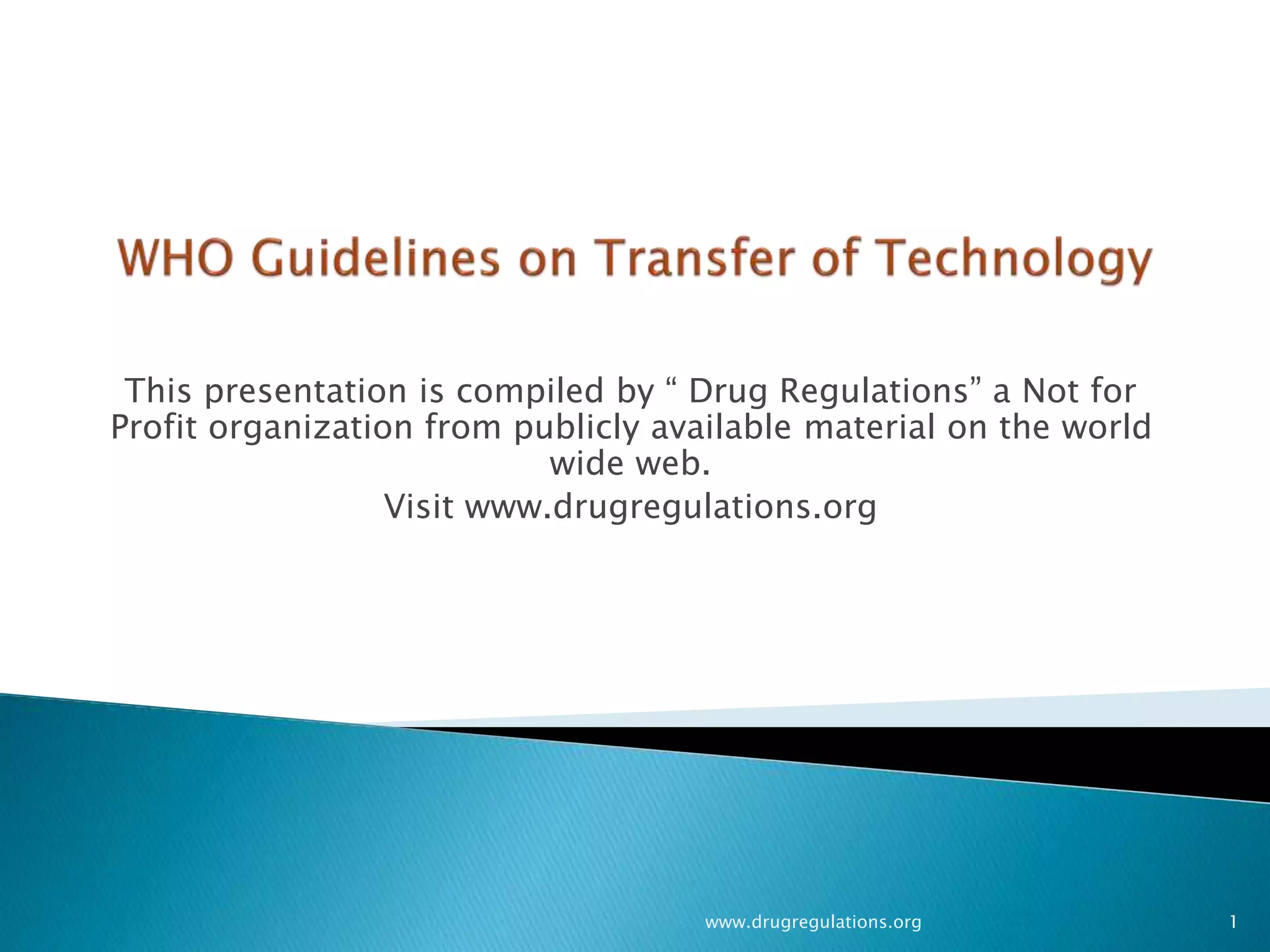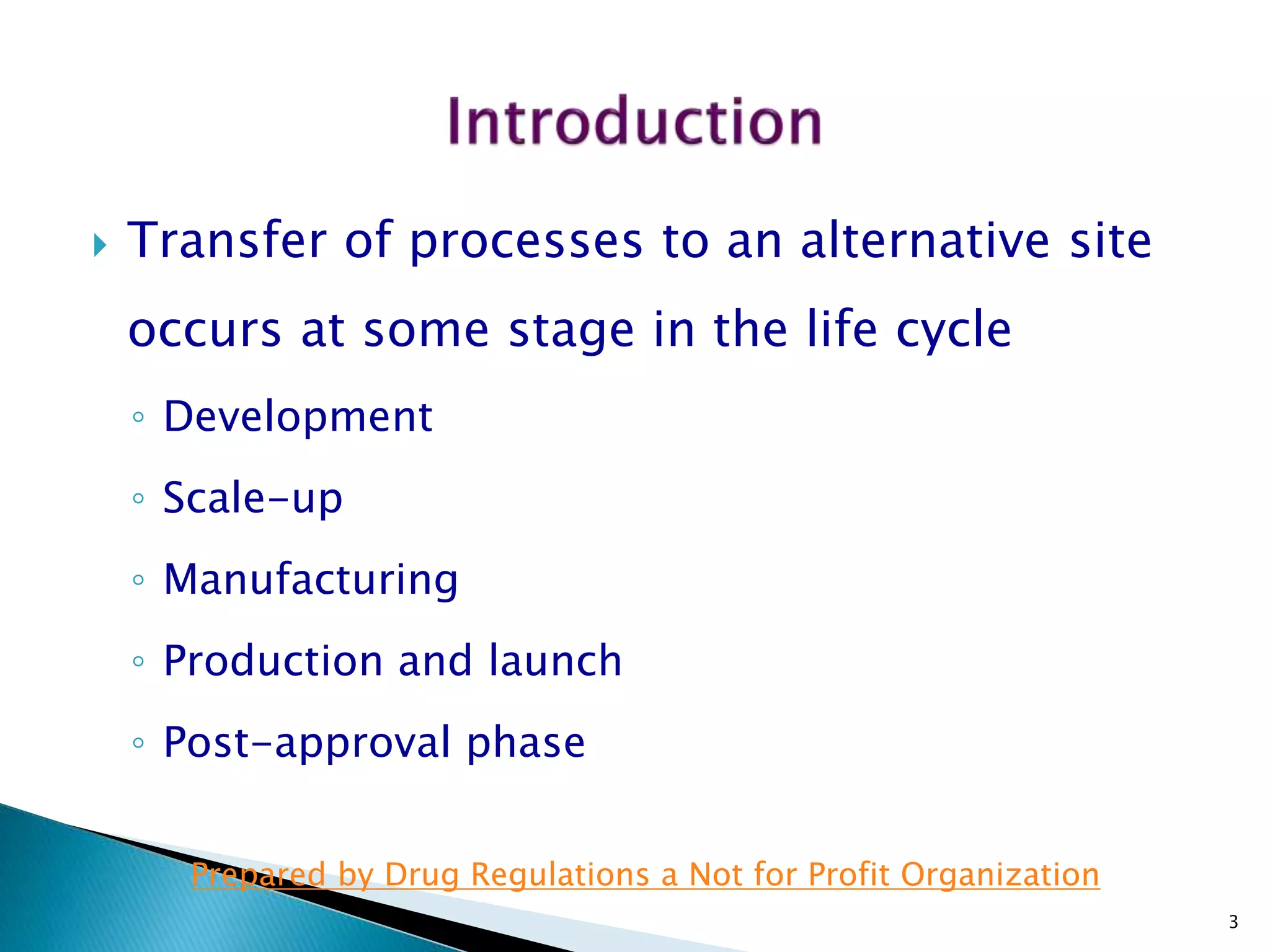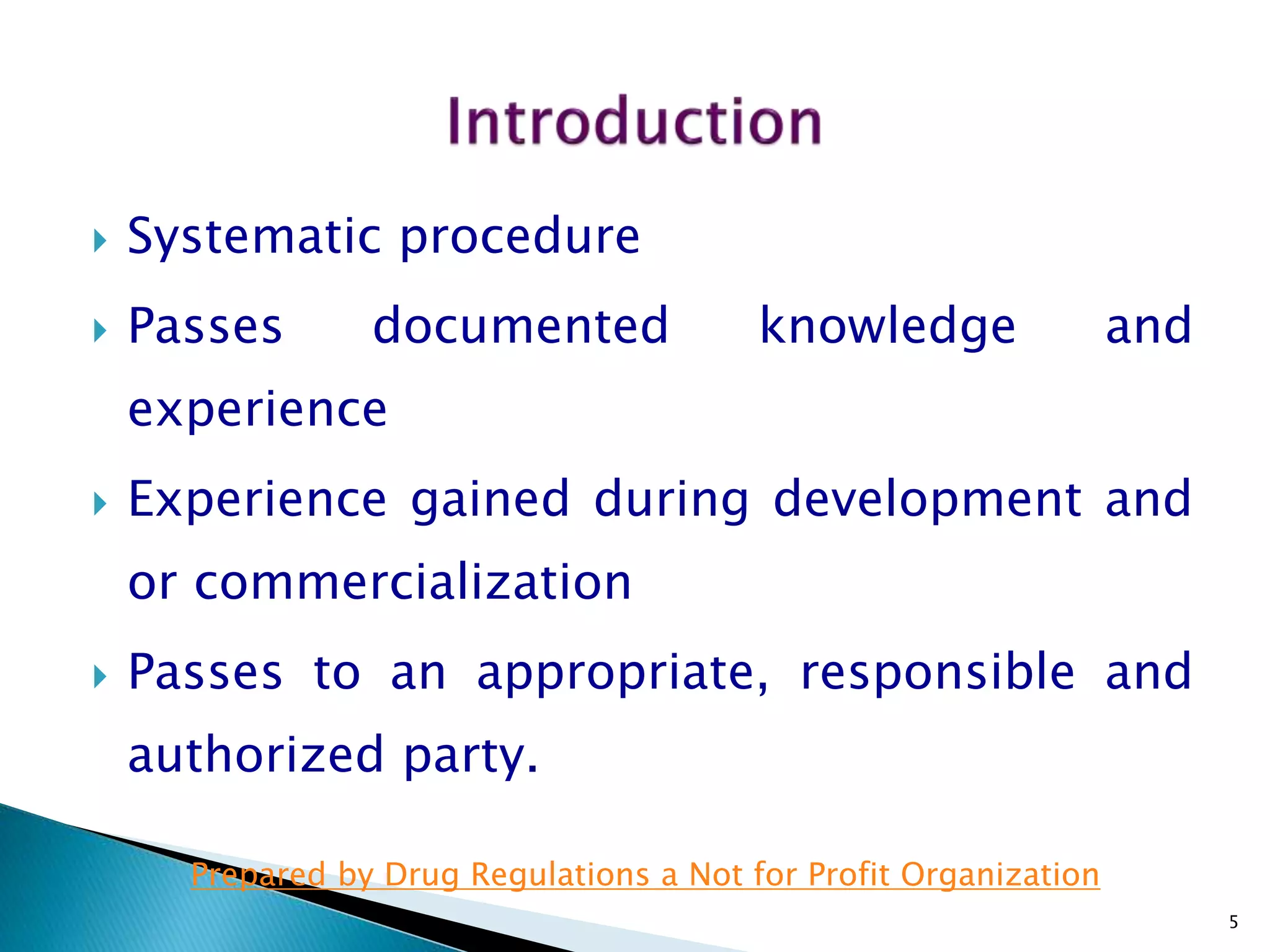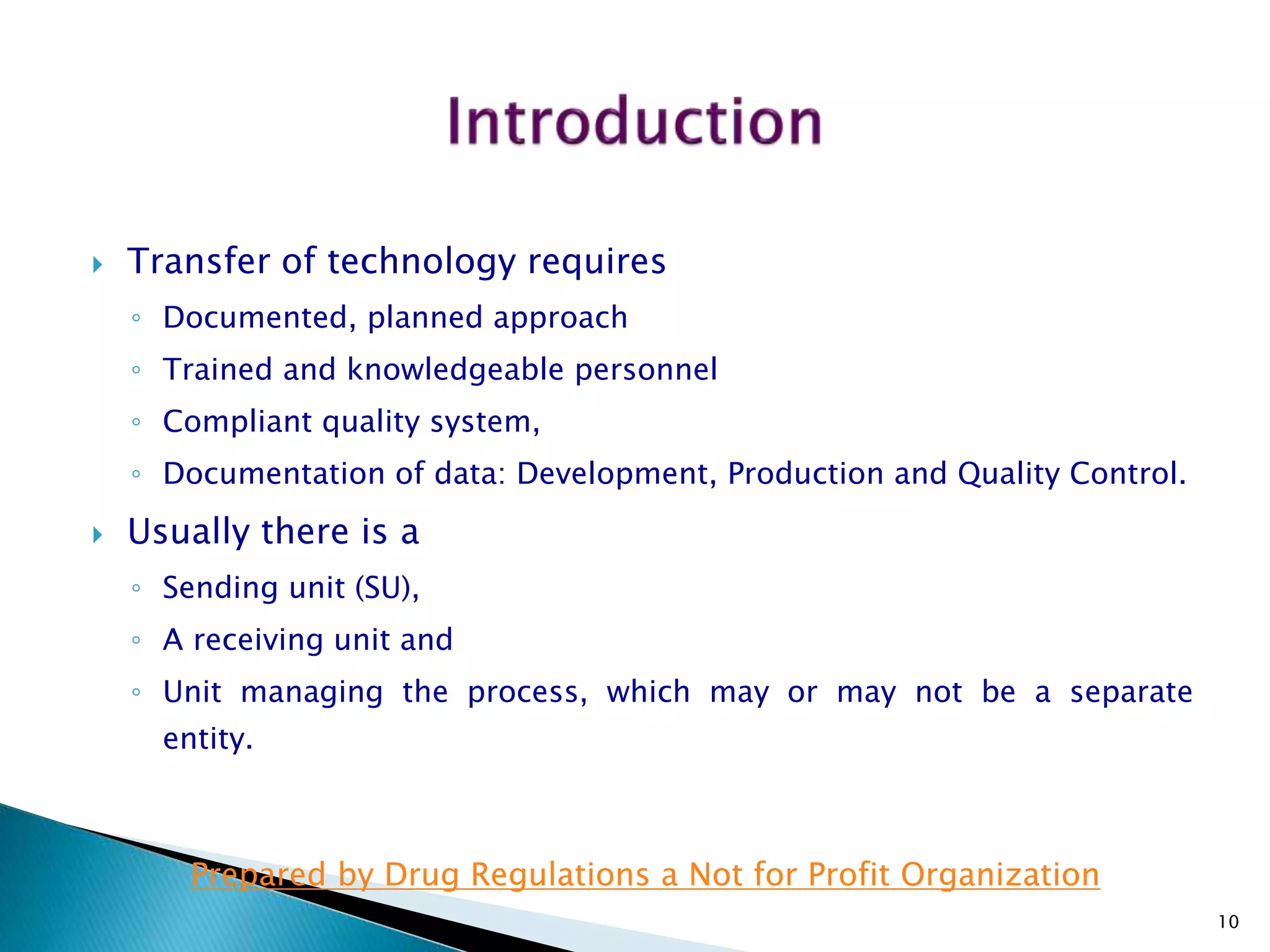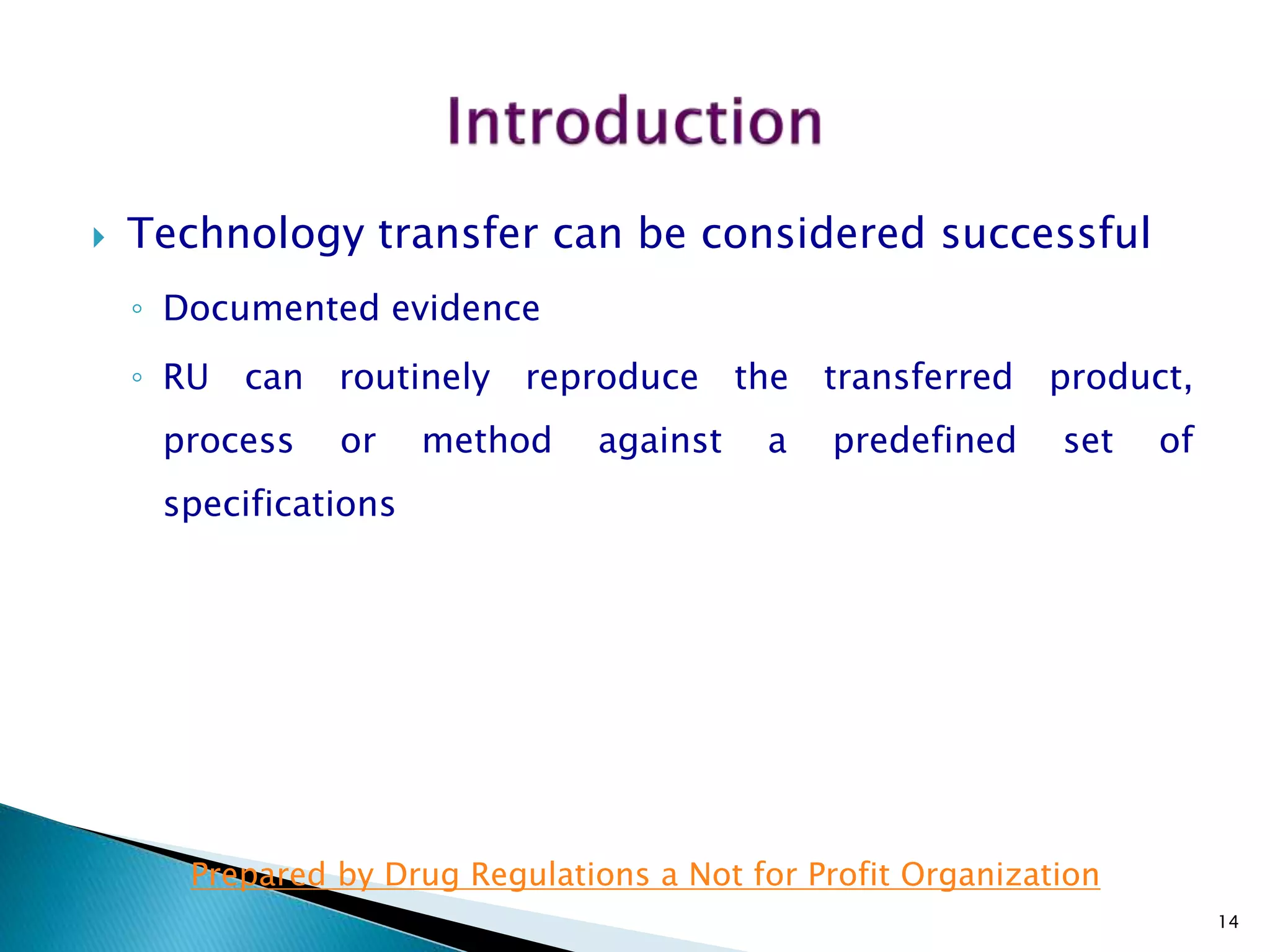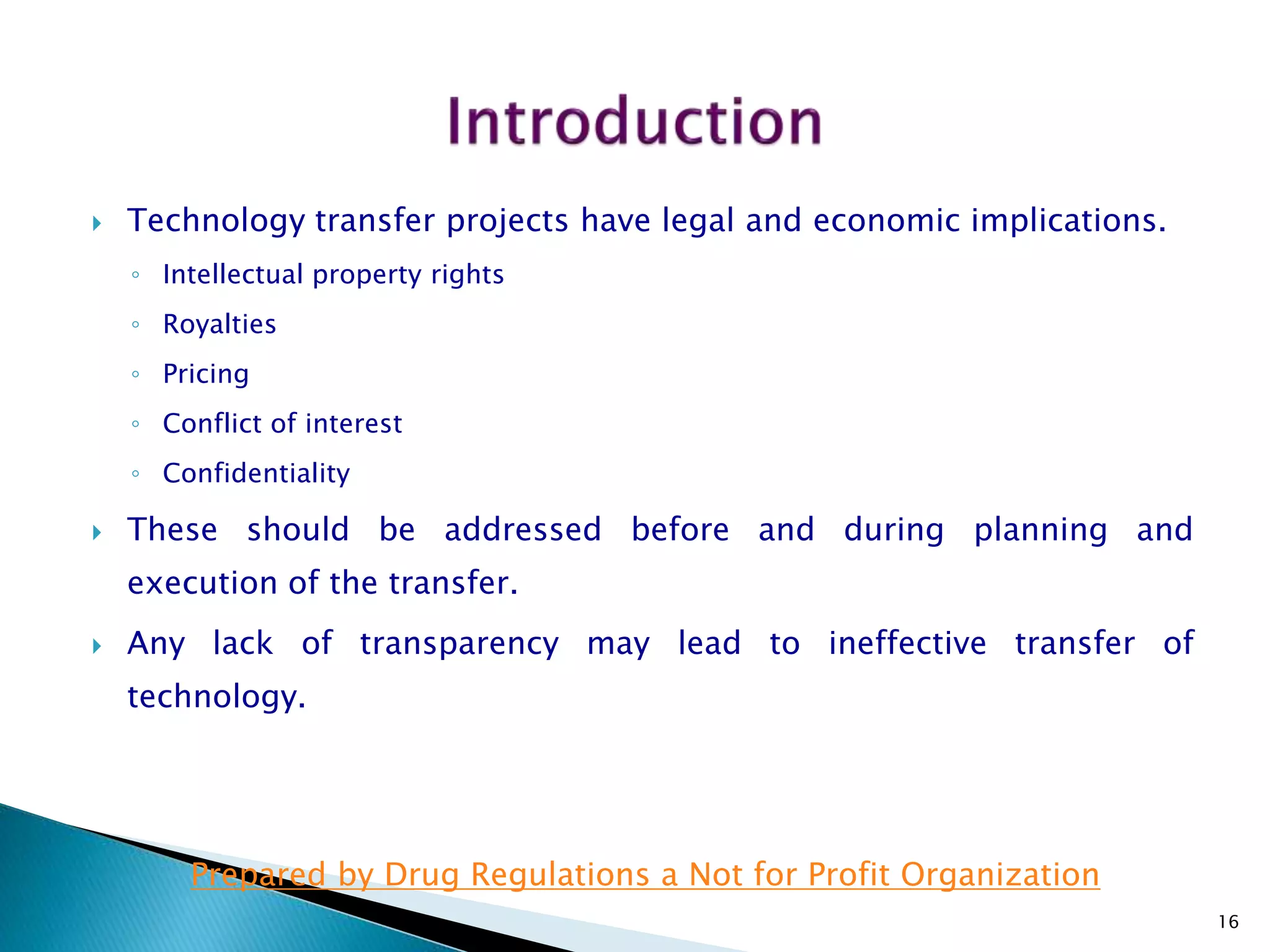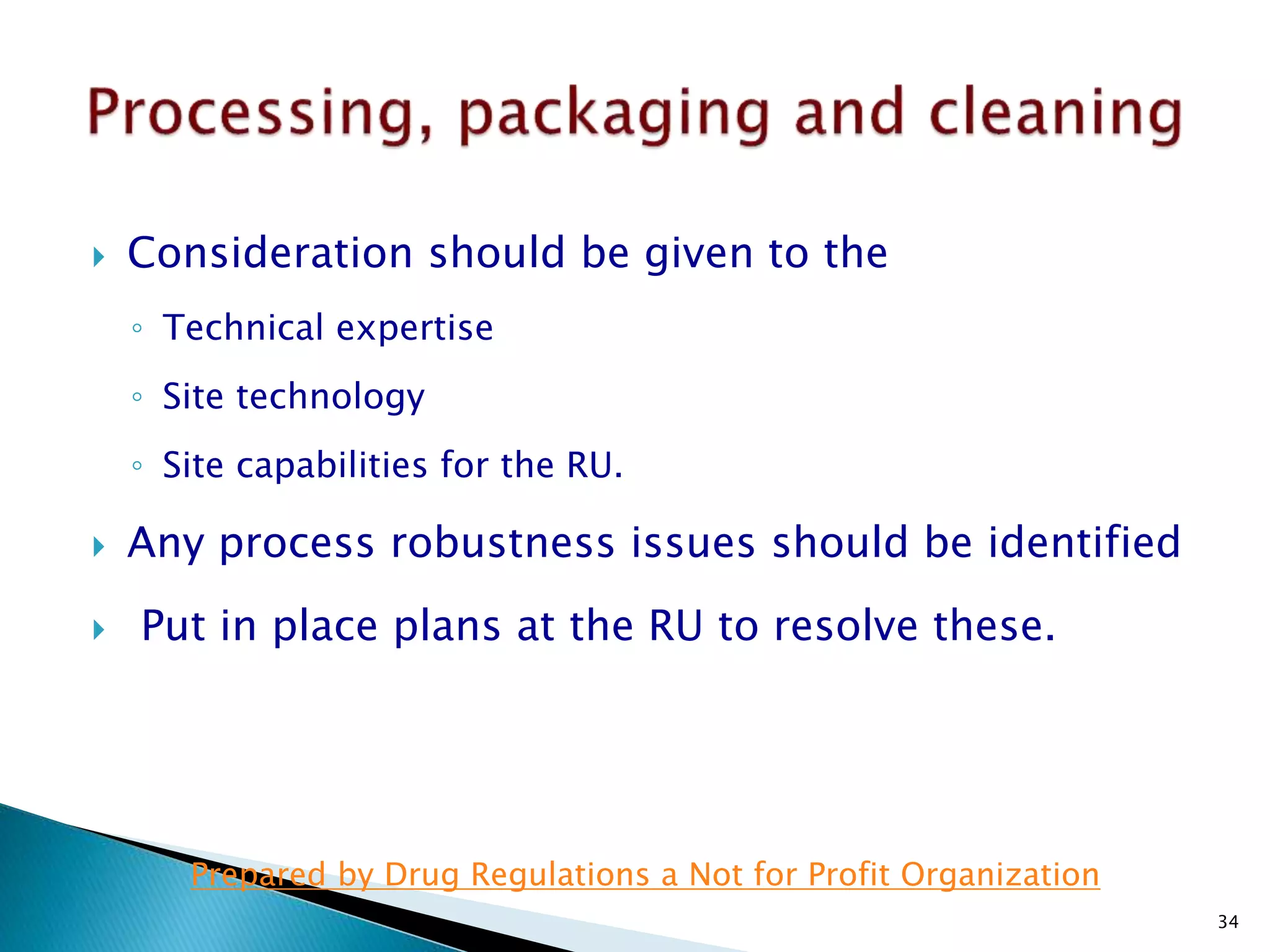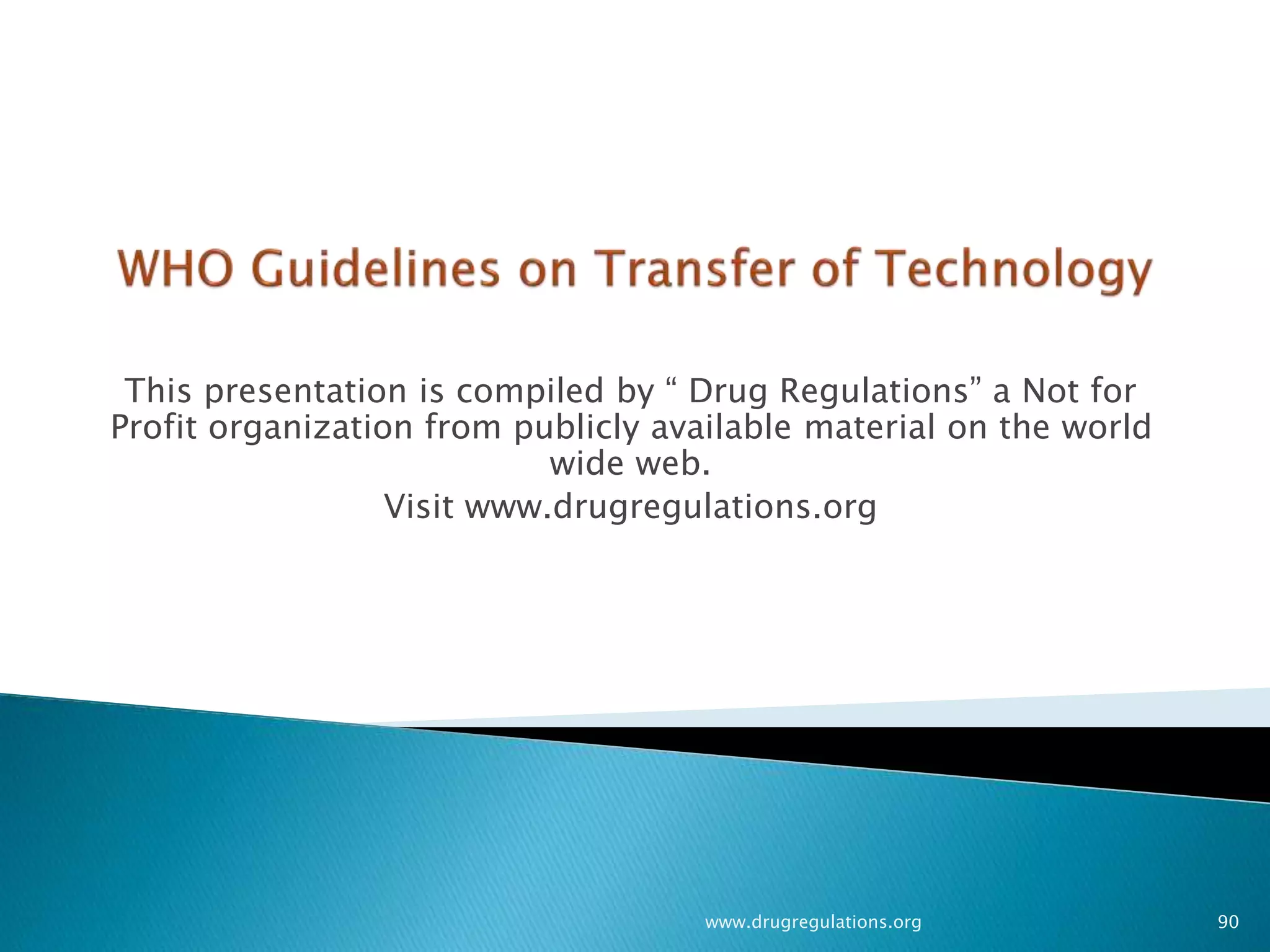The document provides guidance on technology transfer between pharmaceutical manufacturing sites. It discusses that technology transfer requires a documented, planned approach with trained personnel and quality systems. A successful transfer involves the sending unit providing documentation to the receiving unit, conducting training, and jointly executing a transfer protocol. The receiving unit must demonstrate it can routinely reproduce the product or process to specifications. The guidance addresses general principles, planning, information to be transferred for active pharmaceutical ingredients and excipients, process validation, and assessing a successful transfer.
